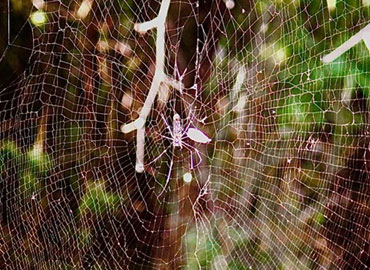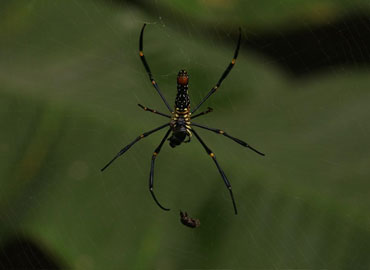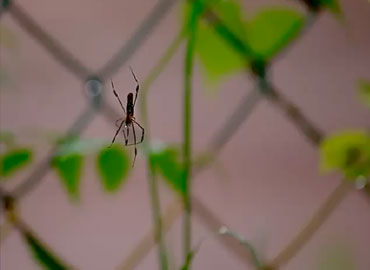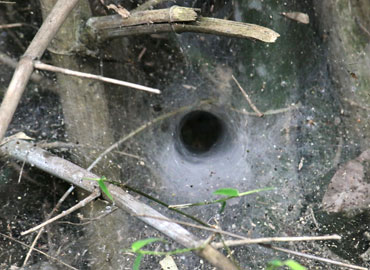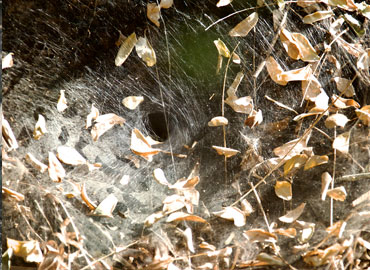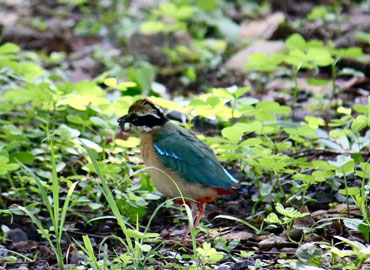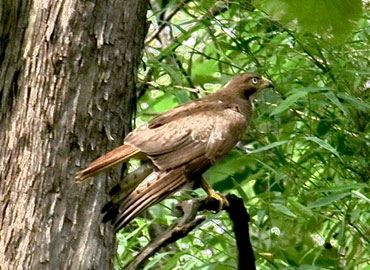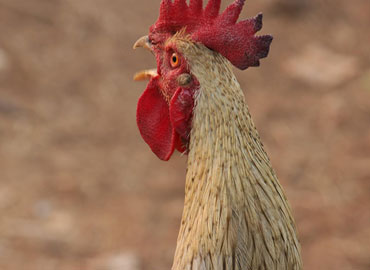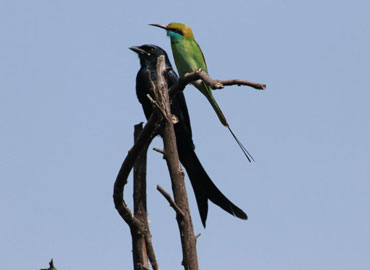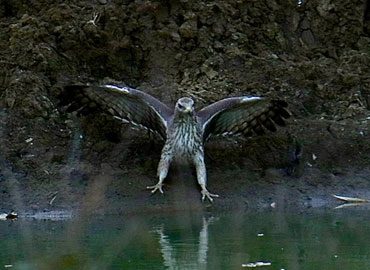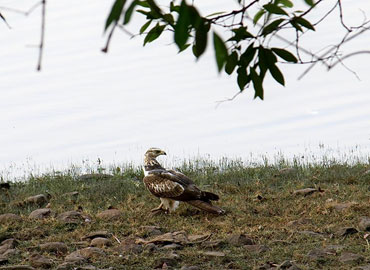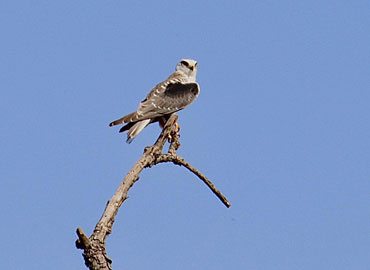Tadoba Andhari Tiger Reserve's Wildlife Sanctuary
Wildlife Species Found in the Wildlife Sanctuary

Welcome to the Wildlife Sanctuary, a hidden gem within the Tadoba Andhari Tiger Reserve! This sanctuary is home to some of the rarest and most endangered species of flora and fauna in India. Join us on a journey through this beautiful sanctuary as we explore the lush green forests, breathtaking landscapes, and fascinating wildlife that call it home. In this article, we will introduce you to the Wildlife Sanctuary, its unique features, and the wildlife species found here, from the majestic Indian Giant Squirrel to the colorful Malabar Pied Hornbill. We will also share some tips for birdwatching in the sanctuary and the best time to visit. Get ready for an unforgettable wildlife adventure with 98 Stripes!
A different perspective to the forest, yes there are so of them to observe, the other busy and serious seasonal creature are the Spiders. Man they are one complicated truly artistic and a hardworking creature, to the level of what we humans can only relate of as a microscopic detailing for survival and ensuring there presence is there as they are very important to the eco system of the first.
To start with let me tell you that TATR hosts one the finest Arachnida’s and
GIANT WOOD SPIDER - its as the name goes. In one of the afaris that I was travelling, like many a time before, had a spider web on the face, and thought it to be a common case, but no. This web continued to drag with us for sometime and was more sticky than most, it would not be removed. As if that wasn’t enough we found a big on the drivers cap, and the guide can of continently caught it and threw it away.The guy was really big, and the gudie told I=us this variety is non poisonous and a big fighter. On being inquisitive he took us around to show several of these gigantic spiders, hung across huge branches spreading approx 2 mtr, dia, intricately woven fabric all around. These were the GIANT WOOD SPIDERS, wow man what a creature it was. It would have been just post monsoon, and my curiosity moved towards seeing more of them. Like in most forest generally one is interested in the BIG GUY, but seeing my interest drift to this the guide kind of grinned, as if thinking some one is here and means to be serious. He kind of instigated me and then also tested me by saying we would miss the tiger, but for some reason I was okay leaving the tiger hunger for a while.By JO!! I was happy by the end of the 4 hrs, and when we were outside I was the only silent one as others where ecstatic having seen a glimpse of the yellow stripped creature and some even same the rare leopard. But deep within I was thinking that I had kind of seen something starkly different similarly interesting and mesmerising and rather even more intelligent, but I could not speak of it as none would relate to it.
Any way my experience with the GWS, as I call it now in short, was mind blowing. The female is a huge fella about 2’ long and giant 8 legs, and in the huge web spread across two beaches of a tree, was guarding at the centre like a PRINCESS sitting at her fortress. She was mostly dormant but from time to time would move around her web, as if doing inspection. And actually she wash did notice her move around and cleaned the web of muck, like dried leaves or twigs, and at the same time would re weave any part of the web which would have got broken with the fallen twigs leaves or some intruders. She is constantly on the move, now the question that came to my mind was about her food and where is the man. FOOd - The web which is experienced to be highly sticky does the trick. Every thing which passes by the web gets stuck, and look at the science here only the once which is of the desired weight and size for the GWS is what sticks the other either ruptures the web and goes away or falls, That’s why the twigs and leaves also get stuck and she approaches then finds them on no use and discards them. Rest small flies and insects which get stuck is her food. That made sense for the huge web that she weaves, the larger the web the greater the chances for her grab food. MAN - obvious question the guy I noticed was a much smaller size docile being at a corner in the same web, and god only knows how much he contributes in the weaving process. The female is generally in the centre with yellow coloration and the man is one top right fringe of the web having red coloration.
As it is said one thing leads to the other, so ism one the rest houses inside the forest where the guards stay is where the Safari jeep stops for some time, and there I could see one of these spiders weaving her web, BOY !!! Experience of a life time, the lady was going in circular for a couple of times and then dropping herself to the bottom, and then again going in circle to fall back and that’s how she was doing the circle and the horizontal weave. I could not just imagine it, I did try to capture the same in my Tiger capturing lens, which obviously was not the right gear for this. But I could capture it going up and down and moving in circles. How laborious could that be and how confident was she of what she could do. I could see her move and with the droplets of rain the liquid silk oozing from her body used to make the thread, and later I learnt that there are glue on the thread the excrete, and she would fall along with it and make circle too. While the guards did give some inputs on the weaving process but as they are more bend towards the clients need ot tiger, so obviously they have not had the inquisitiveness or urge to know more of them. But I kept wondering as to how come this weave a micro mm thread has so much strength, to keep holding.
When I came out of the gate the first thing I tried was checking, and my lord, one my observations were right and secondly the liquid silk that she oozes out in combination with the dew or rain water from the trees makes the web strings as strong as a Kevlar cord, it has been documented that the silk is 5 times stronger than steel, and no wonder it would not give way when it used to get stuck to our face or body. The silk thread has droplets of glue which is suspended on the silk thread. In some species these carry tranquillising chemicals which paralyses the prey and easy for the spider to devour.
Wow, I am now definitely sure that I would spend some more time figuring out the Funnel Spider, which I have seen in abundance in TATR. My lord that’s another unique creature, the mesh looks like a white blanket and has a funnel like hole in the centre from where the spider peeps. See photo.
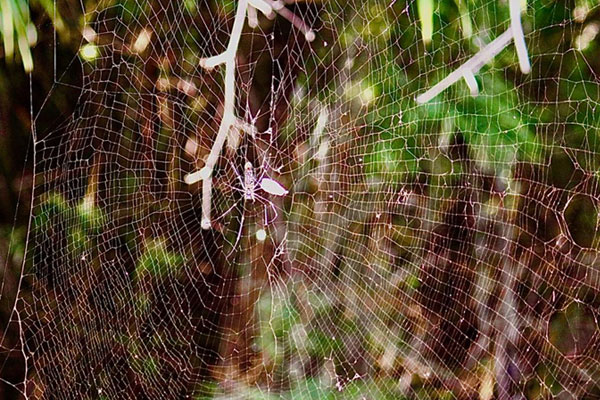
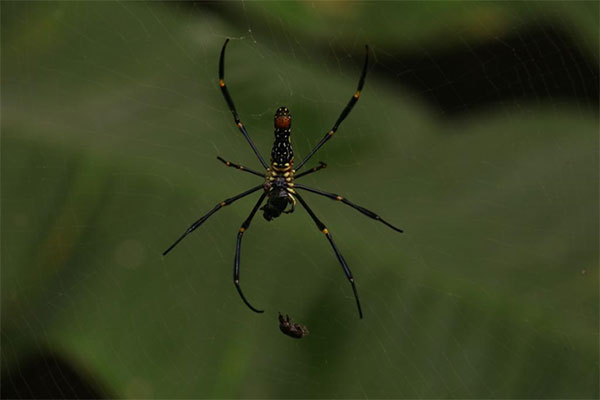
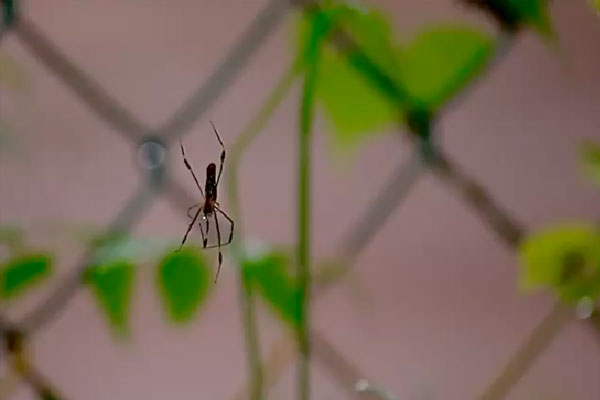
Of course there are other types which I have not covered but would briefly touch upon the another of my favourite the Funnel Spider. Their way of capturing the prey is even more innovative, they weave funnel shaped webs, which they use as burrows to trap their prey. The surface of the web is flat to capture the prey and then they take it inside the funnel to devour. They generally built across tall grasses etc but in TATR you would see it around the tree bases. When you are driving pass and if you happen to see a white woven patch in the base of the tree corn in grass, definitely ask the guide to stop and observe the Master Piece of architecture.
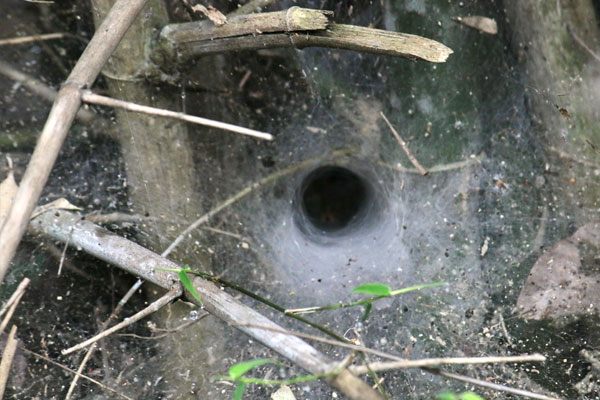
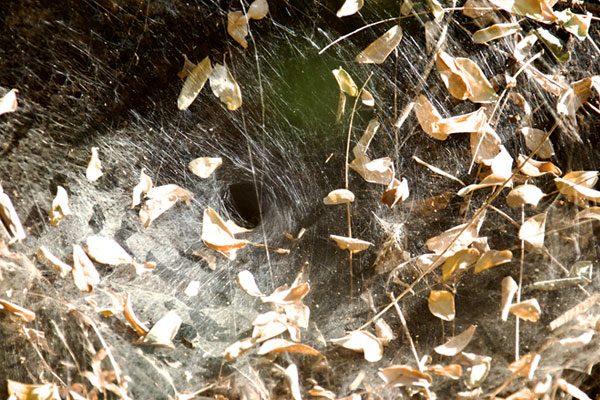
I am yet to site the Signature spider though which are their along with Red Wood Spider, reasons enough to visit the Forest.
Gallery
